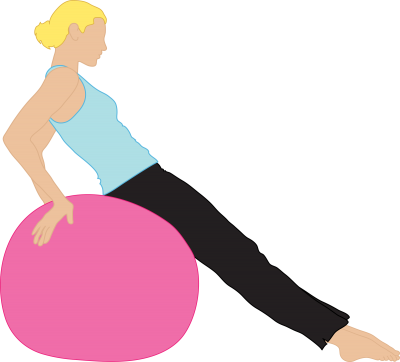Content may contain advertising or affiliate links.
In the journey towards achieving a fit and healthy lifestyle, strength training plays a crucial role. But what exactly is strength training? Let’s dive into the world of strength and explore how training can help us unlock our inner power.

Benefits
Strength training, also known as resistance training, is a form of physical exercise that focuses on building and developing muscular strength and endurance. It involves performing exercises using external resistance, such as weights, resistance bands, or bodyweight, to challenge and overload the muscles.
The benefits of strength training go beyond just building muscles. It improves overall body strength, enhances bone density, boosts metabolism, promotes weight loss, and increases flexibility and stability. Moreover, strength training has been shown to have a positive impact on mental health, reducing anxiety and depression, and improving self-confidence.
One of the key aspects of strength training is progressive overload. This principle involves gradually increasing the intensity, frequency, or duration of your workouts to continually challenge your muscles. By doing so, you stimulate muscle growth and create adaptations that lead to increased strength.
Strength training exercises can be categorized into two main types: compound exercises and isolation exercises. Compound exercises involve multiple muscle groups and joints, such as squats, deadlifts, and bench presses. These exercises provide functional strength and are highly efficient in maximizing muscle recruitment. On the other hand, isolation exercises target specific muscles, such as bicep curls or leg extensions, allowing you to focus on developing particular muscle groups.
To begin your strength training journey, it’s essential to start with proper form and technique. Learning the correct technique not only ensures safety but also maximizes the effectiveness of your workouts. It’s recommended to seek guidance from a certified fitness professional or personal trainer to create a well-rounded strength training program tailored to your goals and abilities.
Strength
Strength training can improve your movement patterns and lower risk of injury, helping prevent joint issues. Strength training also enhances everyday activity capabilities and may help with managing chronic conditions.
Strength-training programs aim to develop your maximum strength, known as your one-repetition maximum (1RM). Your 1RM measures your current strength levels by measuring how much weight can be lifted with good technique for one exercise repetition without compromise to form and technique. Tracking it over time provides insight into where you stand with regards to developing maximum strength.
As there are various methods available for training your muscles, from free weights and machines to dumbbells and resistance bands. Beginners should train two or more times each week with 8-15 exercises for each muscle group. Warm-up before each workout to avoid injury.

Endurance
Endurance training entails working your muscles at low intensity for extended periods. This type of exercise helps maintain a healthy body weight, improve your ability to carry out everyday tasks more easily, and boost confidence levels.
Strengthening muscle endurance is vital for many types of exercise, such as running, cycling, swimming and walking. Resistance or cardio exercises can be used to build it. Squats, lunges and seated dumbbell rows are particularly helpful exercises to increase endurance.
Athletes must prioritize recovery between endurance and strength training sessions, as overtraining can have negative repercussions for their performance and health. A 2:1 or 3:1 strength/endurance training ratio should work best, while high intensity interval training (HIIT) makes an ideal addition for increasing VO2 max without overstressing muscles.
Stamina
Stamina refers to the ability to sustain continuous physical exertion without fatigue, and encompasses cardiovascular endurance and muscular endurance. Cardiovascular endurance refers to your heart and lungs’ capacity for oxygen delivery, while muscular endurance encompasses your muscle’s capacity for repeatable movements over extended periods.
No matter if you train by lifting heavy weights for low repetitions or light weights for high reps, your stamina will improve by training in this fashion. The key to building endurance lies in how much weight can be handled before reaching muscle failure. This can vary based on your body type, currenty activity level, and genetics.
Strength endurance training increases existing muscles and promotes capillarisation for more efficient oxygen supply and removal of metabolic end products like lactate. Strength endurance training may also help prevent injury by strengthening your muscle integrity. In fact, research suggests lifting lower loads until positive failure may be just as essential to hypertrophy (Counts et al. 2016).
Balance
Balance training can play an essential part in keeping you healthy. By improving reaction times and decreasing risk of falling, balance exercises can help ensure active lifestyles as we age.
Introduce different balance exercises into your routine to challenge various muscles across your body and develop coordination. Strive to include dynamic balance training during warm ups, as well as static and weight shifting balance exercises during workouts.
Balance exercise progressions provide the ideal solution, beginning with basic activities and progressing to advanced standing and walking balance challenges. They’re appropriate for people of all fitness levels and environments alike.
Utilize an exercise ball while watching television or during commercial breaks, or practice single-leg balancing movements like single-legged balance. Be mindful not to push yourself too hard as doing so could result in injury.

Coordination
Coordination training aims to increase your ability to perform movements faster and with greater precision, something which is both important for athletic performance, as well as potentially decreasing the risk of future injury.
Coordination involves using multiple body systems, including vision and proprioception (knowing where your feet are in space). Adjusting muscle movements based on feedback from these systems enables someone with excellent coordination to appear more agile than their counterparts.
Although most experts consider coordination innate, there are ways to develop it further. Drills that combine different body parts such as hand-eye coordination exercises may be particularly helpful.
Coordination workouts help you perform more complex movements, which can increase strength. They can also boost energy and promote better sleep by forcing muscles to contract and increasing circulation within your body.
Risks
One of the primary risks of strength training is the potential for musculoskeletal injuries. These injuries can occur due to poor technique, lifting excessive weights, or overtraining without allowing adequate rest and recovery time. Common injuries include sprains, strains, fractures, and tendonitis. To mitigate this risk, it is crucial to start with lighter weights, focus on proper form, gradually increase intensity, and listen to your body’s signals to avoid overexertion. Beginners are prone to this risk, because they start with more weight than necessary due to eagerness.
Intense strength training can put significant strain on the cardiovascular system. During weightlifting exercises, blood pressure temporarily rises, and the heart rate increases. While this is a normal physiological response, individuals with pre-existing cardiovascular conditions should exercise caution. It is advisable to consult a healthcare professional before engaging in high-intensity activities if you have chronic health conditions.
Another risk associated with strength training is the stress it places on joints, especially when performing exercises with heavy weights or incorrect form. This can lead to joint pain, inflammation, and even chronic conditions such as osteoarthritis. To protect your joints, it is crucial to maintain proper technique, use appropriate equipment, and avoid excessive weights that your body cannot handle.
In conclusion, while strength training offers numerous benefits, it is crucial to be aware of the potential risks involved. By following proper techniques, gradually increasing intensity, listening to your body, and prioritizing rest and recovery, you can minimize the risks and enjoy a safe and effective strength training routine.
